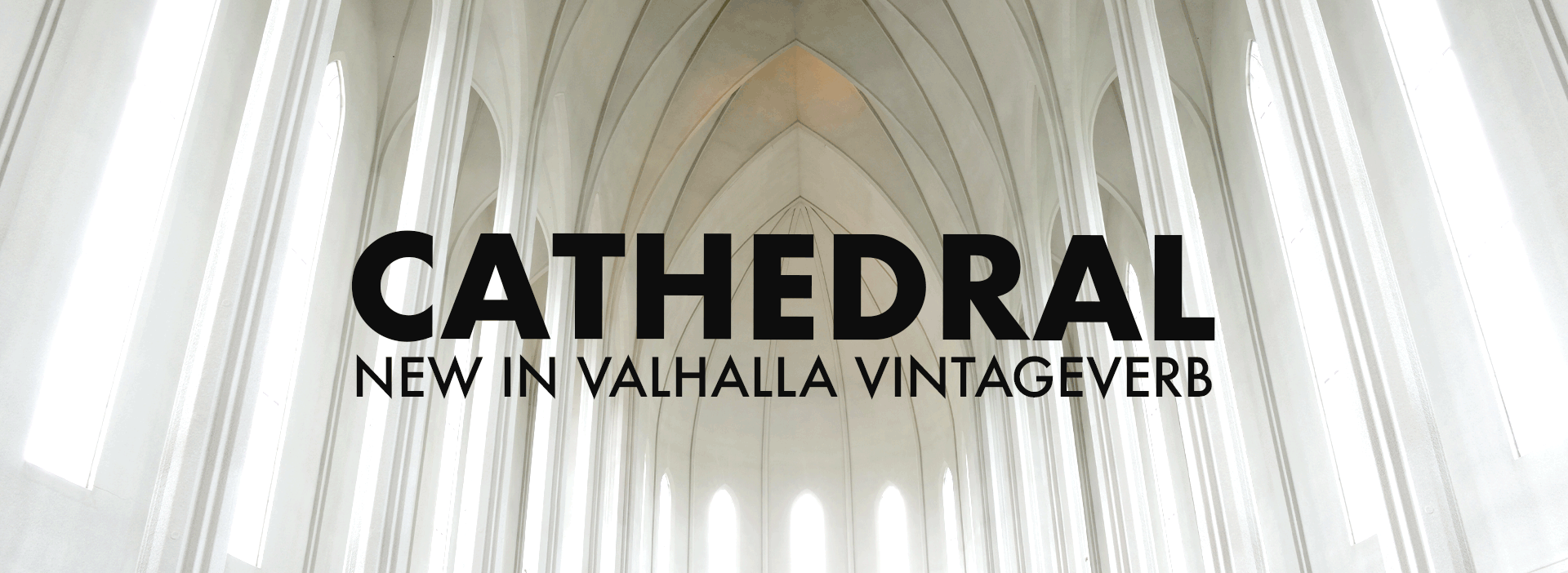Effect-O-Pedia: Modulation
Modulation effects are those effects that change the sound over time. Most modulation effects make use of an LFO (Low Frequency Oscillator), to slowly vary the timbre or amplitude of a signal.
The earliest modulation effects were mechanical in nature:
- Pipe organs, dating back to the sixteenth century, had devices called tremulants that would vary the wind supply to a section of pipes, creating a tremolo and vibrato effect.
- Before there were wah-wah pedals, trumpeters and trombonists used toilet plungers to get a similar effect on their instruments.
- The vibraphone has rotating valves at the end of the resonator tubes, to produce a tremolo effect.
- The Leslie speaker had a rotating speaker horn on the top, as well as a rotating baffle for the lower speaker. The rotation of the speakers produced small amounts of pitch change via the Doppler effect, which resulted in a chorus/vibrato effect.
Early electronic modulation effects date back to the mid 1930s, but these still made use of some mechanical components. The chorale/vibrato effects of the Hammond B-3 organ are electronic, but the “scanning vibrato” that produced the vibrato signal used a motor to read a signal from different R/C circuits. In the early 1940s, DeArmond had a tremolo device, that relied on a motor that shook a glass tube of conductive fluid. As the fluid sloshed around the tube, it would shunt the signal to ground, resulting in a periodic change in the volume.
Eventually, designers were able to figure out truly electronic modulation effects, that produced moving sound that didn’t rely on things mechanically moving around. These effects were originally built into instruments and amplifiers, but by the late 1960s modulation effects were becoming available as pedals, such that any instrument could be plugged into them. The 1970s resulted in an explosion of modulation effects, and the 1980s saw the rise of rackmounted modulation effects. Today, all of the popular modulation effects of the past century are available in plugin form.
A brief listing of the most commonly found modulation effects:
- Tremolo: A periodic variation in the volume of the signal.
- Vibrato: A periodic variation in the pitch of the signal.
- In the 1950s and 1960s, tremolo and vibrato effects were made available in amplifiers.
- The terms “tremolo” and “vibrato” were used interchangeably, and often for the wrong effects.
- The “vibrato” channel of the mid-60s Fender amplifiers produced a change in volume (i.e. tremolo), while the Magnatone amplifiers had true pitch changing vibrato.
- The “brown” Fenders of the early 60s had an effect that combined both vibrato and tremolo.
- Chorus: Simulates two or more signals with the same timbre and almost, but not quite, the same pitch. The chorus effect is used to replicate instruments that have 2 or 3 strings tuned in unison (such as 12-string guitar and pian0), as well as multiple instruments or voices playing the same pitch. Most chorus units use one or two time varying delay lines, with the rate and depth of the modulation determining the intensity of the chorus effect.
- Ensemble: Similar to chorus, but with the goal of simulating a larger orchestra. Ensemble effects usually have 3 or more modulated delay lines, with the modulation being more complex than your typical chorus unit.
- Flanger: Similar to chorus, but usually with a single short delay line being swept by an LFO, and mixed in with the input signal. The delay lengths and modulation depths are shallower than chorus. The goal of flanging is to produce a swept comb filter effect, where peaks and notches are moving up and down in the audio spectrum.
- Phaser: Another swept notch/peak effect, but achieved in a different way than flanging. A phaser uses several allpass filters in series, with the turnover frequencies of the allpass filters swept via an LFO, and the output of the series allpass filters mixed in with the input signal. The result has several prominent notches in the frequency spectrum, without the harmonic spacing found in flanging. Phase shifting was a commonly used effect in the 1970s, and was used on the guitars and electric pianos of many soft rockin’ hits.
- Rotary speaker: A simulation of the Leslie and other rotary speakers. Rotary speakers produce a sound that incorporates both vibrato (from the Doppler shift of the speakers as they move closer to and further from the listener) and tremolo (volume variations as the speaker points towards, and then away from, the listener). The cabinet of a Leslie produces a number of reflections of the speakers. Since these reflections are of a time varying source at different angles, the result is a complicated chorus effect, consisting of a number of reflected signals that have different pitches.





Can’t beat Leslie sound. I play around with Chorus/Flange/Vibrato a lot but often end back up with Leslie (emulation, sadly I don’t think I will get a real one!)
I have all V plugins, are there any tips to get Phaser and Leslie sounds?
Not really. Phasers are very different than swept delays, and are best achieved with a dedicated phaser plugin (or an MXR Phase 90). ValhallaFreqEcho can get some barberpole phaser sounds when the delay is set to as short as possible.
Do you have any plugin that can produce a simple volume tremolo effect?
Nope! Nothing against tremolos, but I haven’t programmed one.
I’ve been hanging out for a Valhalla trem!
I’m a big reverb+trem user. I used to use pedals but have realized how much better these effects sound post amp. A stereo trem plugin would be amazing and I’m hoping Sean gets around to it one day.
Honestly, I’m the opposite. I haven’t heard a reverb + tremolo combination better than the one in my Fender Deluxe Reverb reissue. Although the Strymon Flint pedal is pretty great for that purpose, and also features an amazing 80s reverb – one of my favorite algorithms out there.
As far as a stereo tremolo plugin, it would be hard to justify just tremolo, especially since Ableton Live (my daily driver DAW) is nicely set up for that. But I do have some ideas for the future…